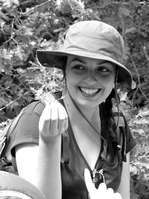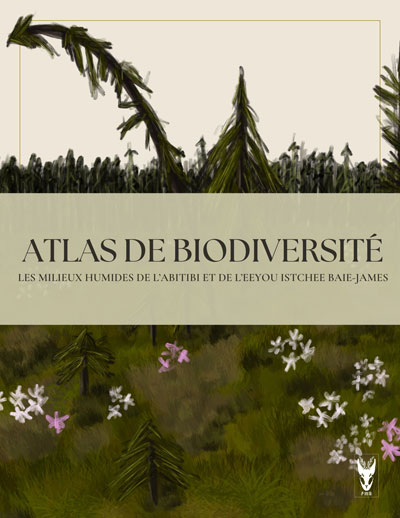
Donald W. Thomas (1955-2009)
Ancien Membre régulier
Écophysiologie animale
Université de Sherbrooke
Faculté des Sciences
Département de biologie
2500, boul. de l'Université
Sherbrooke (Québec) J1K 2R1
Canada
À la mémoire de Don ![]()
Fondation Donald Thomas ![]()
FORMATION
- Postdoctorat Forestry 1985 (University of Washington)
- Postdoctorat Biology 1984 (Carleton University)
- Ph.D. Biology 1982 (University of Aberdeen)
- M.Sc. Biology 1978 (Carleton University)
- B.Sc. Biology 1975 (University of New Brunswick)
Le 30 mai 2009, est décédé à l'âge de 55 ans, le professeur Donald W. Thomas, doyen de la Faculté des sciences, des suites d’un accident vasculaire cérébral, sur son terrain d'expérimentation en Corse. Le CEF perd ainsi un très important chercheur en écophysiologie animale et un passionné de la vie!
THÈMES DE RECHERCHE
Depuis mon entrée en fonction à l'Université de Sherbrooke en 1985 en tant que Professeur-chercheur, mon programme de recherche et de formation de jeunes chercheurs et chercheures a porté sur l'équilibre et les contraintes énergétiques et nutritionnelles chez les homéothermes en sens large. J’utilise les mammifères et les oiseaux comme modèles biologiques et mes recherches portent autant sur les animaux libres dans la nature que dans le laboratoire. Je crois que le mariage des méthodes précises du laboratoire avec les études sur le terrain permet de mieux comprendre les contraintes énergétiques et nutritionnelles que les animaux doivent solutionner dans leur vie quotidienne. Durant les derniers 15 ans, mes recherches et celles de mes étudiants ont abordé des problématiques très diversifiées:
- torpeur et hibernation (chauves-souris insectivores et rongeurs)
- fonction digestive et extraction des nutriments (chauves-souris frugivores et rongeurs)
- condition corporelle et régulation du métabolisme (chauves-souris frugivores, rongeurs et oiseaux)
- flux de chaleur (cornes des bovidés et modèles taxidermiques)
- dépenses d'énergie lors des périodes de grande demande (reproduction chez les oiseaux et hivernage chez les rongeurs).
C’est ce dernier axe qui m’a amené à établir une collaboration avec les Drs Lambrechts et Blondel du Centre d’Écologie Fonctionnelle et Évolutive (CNRS, Montpellier, France) afin de me permettre de marier l’approche écophysiologique avec l’écologie évolutive, collaboration qui ouvre de nouvelles orientations de recherches en France.
Vous pouvez télécharger toutes mes références bibliographiques en format BibTeX, BibTeX-CSV, FRQNT ou EndNote
PUBLICATIONS
Livres
Aucun
Chapitres de livre
- Thomas, D.W., Henry, M. (2006) Epomops buettikoferi. In Mammals of Africa. (Happold, D. and Butynski, T., Eds.) Mammals of Africa
- Thomas, D.W., Henry, M. (2006) Myonycteris torquata. In Mammals of Africa. (Happold, D. and Butynski, T., Eds.) Academic Press, NY
- Thomas, D.W., Henry, M. (2006) Eidolon helvum. In Mammals of Africa. (Happold, D. and Butynski, T., Eds.) Academic Press, NY
- Thomas, D.W., Henry, M. (2006) Micropteropus pusillus. In Mammals of Africa. (Happold, D. and Butynski, T., Eds.) NY, Academic Press
- Thomas, D.W., Geiser, F. (2005) Temperature, hibernation energetics, and the cave and continental distributions of little brown bats. In Functional and Evolutionary Ecology of Bats. (Akbar, Z., McCracken, G.F. and Kunz, T.H., Eds.) NY, Oxford University Press
- Thomas, D.W., Geiser, F. (2005) Thermal and energetic considerations in the evolutionary ecology of bats. In Functional and Evolutionary Ecology of Bats. (Akbar, Z., McCracken, G.F. and Kunz, T.H., Eds.) NY, Oxford University Press
- Speakman, J.S., Thomas, D.W. (2003) Physiological ecology and energetics of bats. In Ecology of bats II. (Kunz, T.H. and Fenton, M.B., Eds.) University of Chicago Press, pages 430-490
Livres, numéros spéciaux et actes de colloques publiés à titre d'éditeur
Aucun
Articles révisés par un comité de lecture
- Mabille, G., Berteaux, D., Thomas, D.W., Fortin, D. (2011) Behavioural responses of wintering porcupines to their heterogeneous thermal environment. Ecoscience, 18(4):341-353
- Thomas, D.W., Bourgault, P., Shipley, B., Perret, P., Blondel, J. (2010) Context-dependent Changes in the Weighting of Environmental Cues That Initiate Breeding in a Temperate Passerine, the Corsican Blue Tit (Cyanistes caeruleus). Auk, 127(1):129-139
- Careau, V., Bininda-Emonds, O.R.P., Thomas, D.W., Reale, D., Humphries, M.M. (2009) Exploration strategies map along fast-slow metabolic and life-history continua in muroid rodents. Functional Ecology, 23(1):150-156
- Mennerat, A., Perret, P., Bourgault, P., Blondel, J., Gimenez, O., Thomas, D.W., Heeb, P., Lambrechts, M.M. (2009) Aromatic plants in nests of blue tits: positive effects on nestlings. Animal Behaviour, 77(3):569-574
- Mathot, K.J., Godde, S., Careau, V., Thomas, D.W., Giraldeau, L.A. (2009) Testing dynamic variance-sensitive foraging using individual differences in basal metabolic rates of zebra finches. Oikos, 118(4):545-552
- Munro, D., Thomas, D.W., Humphries, M.M. (2008) Extreme suppression of aboveground activity by a food-storing hibernator, the eastern chipmunk (Tamias striatus). Canadian Journal of Zoology, 86(5):364-370
- Careau, V., Thomas, D.W., Humphries, M.M., Reale, D. (2008) Energy metabolism and animal personality. Oikos, 117(5):641-653
- Dubois, Y., Blouin-Demers, G., Thomas, D.W. (2008) Temperature selection in wood turtles (Glyptemys insculpta) and its implications for energetics. Ecoscience, 15(3):398-406
- Landry-Cuerrier, M., Munro, D., Thomas, D.W., Humphries, M.M. (2008) Climate And Resource Determinants Of Fundamental And Realized Metabolic Niches Of Hibernating Chipmunks. Ecology, 89(12):3306-3316
- Thomas, D.W., Shipley, B., Blondel, J., Perret, P., Simon, A., Lambrechts, M.M. (2007) Common paths link food abundance and ectoparasite loads to physiological performance and recruitment in nestling blue tits. Functional Ecology, 21(5):947-955
- Careau, V., Morand-Ferron, J., Thomas, D.W. (2007) Basal metabolic rate of Canidae from hot deserts to cold arctic climates. Journal of Mammalogy, 88(2):394-400
- Bourgault, P., Thomas, D.W., Blondel, J., Perret, P., Lambrechts, M.M. (2007) Between-population differences in egg composition in Blue Tits (Cyanistes caeruleus). Canadian Journal of Zoology, 85(1):71-80
- Bourgault, P., Thomas, D.W., Blondel, J., Lambrechts, M. (2006) Between-population differences in egg quality in Blue Tits: Perspectives for the study of the proximate determinants of breeding traits in heterogeneous environments. Journal of Ornithology, 147(5):141
- Careau, V., Therrien, J.-F., Porras, P., Thomas, D.W., Bildstein, K. (2006) Soaring and gliding flight of migrating Broad-winged Hawks: Behavior in the nearctic and neotropics compared. Wilson Journal of Ornithology, 118(4):471-477
- Caro, S.P., Lambrechts, M.M., Chastel, O., Sharp, P.J., Thomas, D.W., Balthazart, J. (2006) Simultaneous pituitary-gonadal recrudescence in two Corsican populations of male blue tits with asynchronous breeding dates. Hormones and Behavior, 50(3):347-360
- Grosbois, V., Henry, P.Y., Blondel, J., Perret, P., Lebreton, J.D., Thomas, D.W., Lambrechts, M.M. (2006) Climate impacts on Mediterranean blue tit survival: An investigation across seasons and spatial scales. Global Change Biology, 12(12):2235-2249
- Blondel, J., Thomas, D.W., Charmantier, A., Perret, P., Bourgault, P., Lambrechts, M.M. (2006) A thirty-year study of phenotypic and genetic variation of blue tits in Mediterranean habitat mosaics. BioScience, 56(8):661-673
- Ferland-Raymond, B., Bachand, M., Thomas, D.W., Bildstein, K. (2005) Flapping rates of migrating and foraging Turkey Vultures Cathartes aura in Costa Rica. Vulture News, 53:4-9
- Simon, A., Thomas, D.W., Speakman, J.R., Blondel, J., Perret, P., Lambrechts, M.M. (2005) Impact of ectoparasitic blowfly larvae (Protocattiphora spp.) on the behavior and energetics of nestling Blue Tits. Journal of Field Ornithology, 76(4):402-410
- Munro, D., Thomas, D.W., Humphries, M.M. (2005) Torpor patterns of hibernating eastern chipmunks Tamias striatus vary in response to the size and fatty acid composition of food hoards. Journal of Animal Ecology, 74(4):692-700
- Tremblay, I., Thomas, D.W., Blondel, J., Perret, P., Lambrechts, M.M. (2005) The effect of habitat quality on foraging patterns, provisioning rate and nestling growth in Corsican Blue Tits Parus caeruleus. Ibis, 147(1):17-24
- Caro, S.P., Balthazart, J., Thomas, D.W., Lacroix, A., Chastel, O., Lambrechts, M.M. (2005) Endocrine correlates of the breeding asynchrony between two corsican populations of blue tits (Parus caeruleus). General and Comparative Endocrinology, 140(1):52-60
- Humphries, M.M., Boutin, S., Thomas, D.W., Ryan, J.D., Selman, C., McAdam, A.G., Berteaux, D., Speakman, J.R. (2005) Expenditure freeze: The metabolic response of small mammals to cold environments. Ecology Letters, 8(12):1326-1333
- Simon, A., Thomas, D.W., Blondel, J., Perret, P., Lambrechts, M.M. (2005) A test of genetic versus environmental determination of between-population differences in nestling size and hematocrit level in Blue Tits (Parus caeruleus). Canadian Journal of Zoology, 83:694-701
- Simon, A., Thomas, D.W., Bourgault, P., Blondel, J., Perret, P., Lambrechts, M.M. (2005) Between-population differences in nestling size and hematocrit level in blue tits (Parus caeruleus): A cross-fostering test for genetic and environmental effects. Canadian Journal of Zoology, 83(5):694-701
- Munro, D., Thomas, D.W. (2004) The role of polyunsaturated fatty acids in the expression of torpor by mammals: A review. Zoology, 107(1):29-48
- Simon, A., Thomas, D.W., Blondel, J., Perret, P., Lambrechts, M.M. (2004) Physiological ecology of mediterranean blue tits (Parus caeruleus L.): Effects of ectoparasites (Protocalliphora spp.) and food abundance on metabolic capacity of nestlings. Physiological and Biochemical Zoology, 77(3):492-501
- Lambrechts, M.M., Caro, S., Charmantier, A., Gross, N., Galan, M.J., Perret, P., Cartan-Son, M., Dias, P.C., Blondel, J., Thomas, D.W. (2004) Habitat quality as a predictor of spatial variation in blue tit reproductive performance: A multi-plot analysis in a heterogeneous landscape. Oecologia, 141(4):555-561
- Banbura, J., Perret, P., Blondel, J., Thomas, D.W., Cartan-Son, M., Lambrechts, M.M. (2004) Effects of Protocalliphora parasites on nestling food composition in Corsican Blue Tits Parus caeruleus: Consequences for nestling performance. Acta Ornithologica, 39(2):93-103
- Humphries, M.M., Kramer, D.L., Thomas, D.W. (2003) The role of energy availability in mammalian hibernation: An experimental test in free-ranging eastern chipmunks. Physiological and Biochemical Zoology, 76(2):180-186
- Humphries, M.M., Thomas, D.W., Kramer, D.L. (2003) The role of energy availability in mammalian hibernation: A cost-benefit approach. Physiological and Biochemical Zoology, 76(2):165-179
- Simon, A., Thomas, D.W., Blondel, J., Lambrechts, M.M., Perret, P. (2003) Within-brood distribution of ectoparasite attacks on nestling blue tits: A test of the tasty chick hypothesis using inulin as a tracer. Oikos, 102(3):551-558
- Tremblay, I., Thomas, D.W., Lambrechts, M.M., Blondel, J., Perret, P. (2003) Variation in Blue Tit breeding performance across gradients in habitat richness. Ecology, 84(11):3033-3043
- Humphries, M.M., Thomas, D.W., Hall, C.L., Speakman, J.R., Kramer, D.L. (2002) The energetics of autumn mast hoarding in eastern chipmunks. Oecologia, 133(1):30-37
- Humphries, M.M., Thomas, D.W., Speakman, J.R. (2002) Climate-mediated energetic constraints on the distribution of hibernating mammals. Nature, 418:313-316
- Henry, M., Thomas, D.W., Vaudry, R., Carrier, M. (2002) Foraging distances and home range of pregnant and lactating little brown bats (Myotis lucifugus). Journal of Mammalogy, 83(3):767-774
- Thomas, D.W., Blondel, J., Perret, P. (2001) Physiological ecology of Mediterranean Blue Tits (Parus caeruleus): I. A test for inter-population differences in resting metabolic rate and thermal conductance as a response to hot climates. Zoology, 104(1):33-40
- Thomas, D.W., Blondel, J., Perret, P., Lambrechts, M.M., Speakman, J.R. (2001) Variation in food supply, energy expenditure, and the timing of breeding in birds. Science, 294:471a
- Thomas, D.W., Blondel, J., Perret, P., Lambrechts, M.M., Speakman, J.R. (2001) Energetic and fitness costs of mismatching resource supply and demand in seasonally breeding birds. Science, 291(5513):2598-2600
- Humphries, M.M., Thomas, D.W., Kramer, D.L. (2001) Torpor and digestion in food-storing hibernators. Physiological and Biochemical Zoology, 74(2):283-292
- Vezina, F., Charlebois, D., Thomas, D.W. (2001) An automated system for the measurement of mass and identification of birds at perches. Journal of Field Ornithology, 72(2):211-220
- Lariviere, S., Crete, M., Huot, J., Patenaude, R., Price, C., Thomas, D.W. (2001) Influence of food shortage during the summer on body composition and reproductive hormones in the red fox, Vulpes vulpes. Canadian Journal of Zoology, 79(3):471-477
- Vezina, F., Thomas, D.W. (2000) Social status does not affect resting metabolic rate in wintering dark-eyed junco (Junco hyemalis). Physiological and Biochemical Zoology, 73(2):231-236
- Berteaux, D., Thomas, D.W. (1999) Seasonal and interindividual variation in field water metabolism of female meadow voles Microtus pennsylvanicus. Physiological and Biochemical Zoology, 72(5):545-554
- Lambrechts, M.M., Blondel, J., Caizergues, A., Dias, P.C., Pradel, R., Thomas, D.W. (1999) Will estimates of lifetime recruitment of breeding offspring on small-scale study plots help us to quantify processes underlying adaptation? Oikos, 86(1):147-151
- Delorme, M., Thomas, D.W. (1999) Comparative analysis of the digestive efficiency and nitrogen and energy requirements of the phyllostomid fruit-bat (Artibeus jamaicensis) and the pteropodid fruit-bat (Rousettus aegyptiacus). Journal of Comparative Physiology B-Biochemical Systems and Environmental Physiology, 169(2):123-132
- Fournier, F., Thomas, D.W., Garland Jr, T. (1999) A test of two hypotheses explaining the seasonality of reproduction in temperate mammals. Functional Ecology, 13(4):523-529
- Picard, K., Thomas, D.W., Festa-Bianchet, M., Belleville, F., Laneville, A. (1999) Differences in the thermal conductance of tropical and temperate bovid horns. Ecoscience, 6(2):148-158
- Fournier, F., Thomas, D.W. (1999) Thermoregulation and repeatability of oxygen-consumption measurements in winter-acclimatized North American porcupines (Erethizon dorsatum). Canadian Journal of Zoology, 77(2):194-202
- Thomas, D.W., Pacheco, M.A., Fournier, F., Fortin, D. (1998) Validation of the effect of helox on thermal conductance in homeotherms using heated models. Journal of Thermal Biology, 23(6):377-380
- Fournier, F., Thomas, D.W. (1997) Nitrogen and energy requirements of the North American porcupine (Erethizon dorsatum). Physiological and Biochemical Zoology, 70(6):615-620
- Audet, D., Thomas, D.W. (1997) Facultative hypothermia as a thermoregulatory strategy in the phyllostomid bats, Caroliia perspicillata and Sturnira lilium. Journal of Comparative Physiology B-Biochemical Systems and Environmental Physiology, 167(2):146-152
- Thomas, D.W., Geiser, F. (1997) Periodic arousals in hibernating mammals: Is evaporative water loss involved? Functional Ecology, 11(5):585-591
- Berteaux, D., Bergeron, J.M., Thomas, D.W., Lapierre, H. (1996) Solitude versus gregariousness: Do physical benefits drive the choice in overwintering meadow voles? Oikos, 76(2):330-336
- Berteaux, D., Masseboeuf, F., Bonzom, J.M., Bergeron, J.M., Thomas, D.W., Lapierre, H. (1996) Effect of carrying a radiocollar on expenditure of energy by meadow voles. Journal of Mammalogy, 77(2):359-363
- Delorme, M., Thomas, D.W. (1996) Nitrogen and energy requirements of the short tailed fruit bat (Carollia perspicillata): Fruit bats are not nitrogen constrained. Journal of Comparative Physiology B-Biochemical Systems and Environmental Physiology, 166(7):427-434
- Berteaux, D., Thomas, D.W., Bergeron, J.M., Lapierre, H. (1996) Repeatability of daily field metabolic rate in female Meadow Voles (Microtus Pennsylvanicus). Functional Ecology, 10(6):751-759
- Picard, K., Festa-Bianchet, M., Thomas, D.W. (1996) The cost of horniness: Heat loss may counter sexual selection for large horns in temperate bovids. Ecoscience, 3(3):280-284
- Thomas, D.W., Brigham, R.M., Lapierre, H. (1996) Field metabolic rates and body mass changes in common poorwills (Phalaenoptilus nuttallii: Caprimulgidae). Ecoscience, 3(1):70-74
- Audet, D., Thomas, D.W. (1996) Evaluation of the accuracy of body temperature measurement using external radio transmitters. Canadian Journal of Zoology, 74(9):1778-1781
- Thomas, D.W. (1995) Hibernating bats are sensitive to nontactile human disturbance. Journal of Mammalogy, 76(3):940-946
- Picard, K., Thomas, D.W., Festa-Bianchet, M., Lanthier, C. (1994) Bovid horns: An important site for heat loss during winter? Journal of Mammalogy, 75(3):710-713
- Thomas, D.W., Martin, K., Lapierre, H. (1994) Doubly labelled water measurements of field metabolic rate in white-tailed ptarmigan: Variation in background isotope abundances and effect on CO2 production estimates. Canadian Journal of Zoology, 72(11):1967-1972
- Gauthier, M., Thomas, D.W., Speakman, J.R., Lapierre, H. (1994) Benefits associated with the reuse of nests by the cliff swallow, Hirundo pyrrhonota. Ecoscience, 1(2):119-126
- Thomas, D.W., Bosque, C., Arends, A. (1993) Development of thermoregulation and the energetics of nestling oilbirds (Steatornis caripensis). Physiological Zoology, 66(3):322-348
- Gauthier, M., Thomas, D.W. (1993) Relative success of two consecutive nesting attempts by a colony of cliff swallows (Hirundo pyrhonotta) at Sherbrooke, Quebec. Canadian Journal of Zoology, 71(5):1055-1059
- Gauthier, M., Thomas, D.W. (1993) Nest site selection and cost of nest building by cliff swallows (Hirundo pyrrhonota). Canadian Journal of Zoology, 71(6):1120-1123
- Thomas, D.W. (1993) Lack of Evidence for a Biological Alarm Clock in Bats (Myotis Spp) Hibernating under Natural Conditions. Canadian Journal of Zoology, 71(1):1-3
- Fullard, J.H., Barclay, R.M.R., Thomas, D.W. (1993) Echolocation in Free-Flying Atiu Swiftlets (Aerodramus-Sawtelli). Biotropica, 25(3):334-339
- Thomas, D.W., Cloutier, D. (1992) Evaporative Water-Loss by Hibernating Little Brown Bats, Myotis-Lucifugus. Physiological Zoology, 65(2):443-456
- Bucyanayandi, J.D., Bergeron, J.M., Soucie, J., Thomas, D.W., Jean, Y. (1992) Differences in Nutritional Quality between Herbaceous Plants and Bark of Conifers as Winter Food for the Vole Microtus-Pennsylvanicus. Journal of Applied Ecology, 29(2):371-377
- Thomas, D.W., Dorais, M., Bergeron, J.M. (1990) Winter Energy Budgets and Cost of Arousals for Hibernating Little Brown Bats, Myotis-Lucifugus. Journal of Mammalogy, 71(3):475-479
- Thomas, D.W., Cloutier, D., Gagne, D. (1990) Arrhythmic breathing, apnea and non-steady-state oxygen uptake in hibernating little brown bats (Myotis lucifugus). Journal of Experimental Biology, 149:395-406
- Gauthier, M., Thomas, D.W. (1990) Evaluation of the accuracy of 22Na and tritiated water for the estimation of food consumption and fat reserves in passerine birds. Canadian Journal of Zoology, 68(7):1590-1594
- Breton, L., Thomas, D.W., Bergeron, J.M. (1989) Digestive-Tract Characteristics for Meadow Voles (Microtus-Pennsylvanicus) Fed Diets Containing Phenols and Tannins. Mammalia, 53(4):656-659
- Thomas, D.W. (1988) The distribution of bats in different ages of Douglas-fir forests. Journal of Wildlife Management, 52(4):619-626
- Thomas, D.W. (1988) The influence of aggressive ants on fruit removal in the tropical tree, Ficus capensis (Moraceae). Biotropica, 20(1):49-53
Articles publiés dans des actes de colloque (proceedings)
Aucun
Rapports scientifiques, manuels et autres
Aucun
Thèses, mémoires et essais
- Thomas, D.W. (1982) Ecology of an African Savanna Fruit Bat Community: Resource Partitioning and Role in Seed Dispersal. Thèse de doctorat, University of Aberdeen, U.K.
- Thomas, D.W. (1978) Aspects of the Social and Mating Behaviour of the Bat, Myotis lucifugus, at Hibernacula in Southern Ontario. Mémoire de maîtrise, Carleton University.
Thèses, mémoires et essais supervisés
- Dubois, Y. (2006) Écologie thermique et sélection d'habitats chez la tortue des bois (Glyptemys insculpta) à la limite nord de sa distribution. Mémoire de maîtrise, Université de Sherbrooke
- Pitre, M.-H. (2006) Composition lipidique et hibernation chez la petite chauve-souris brune (Myotis lucifugus). Mémoire de maîtrise, Université de Sherbrooke
Articles non révisés par un comité de lecture
Aucun
<< | MembresReguliers | >>










